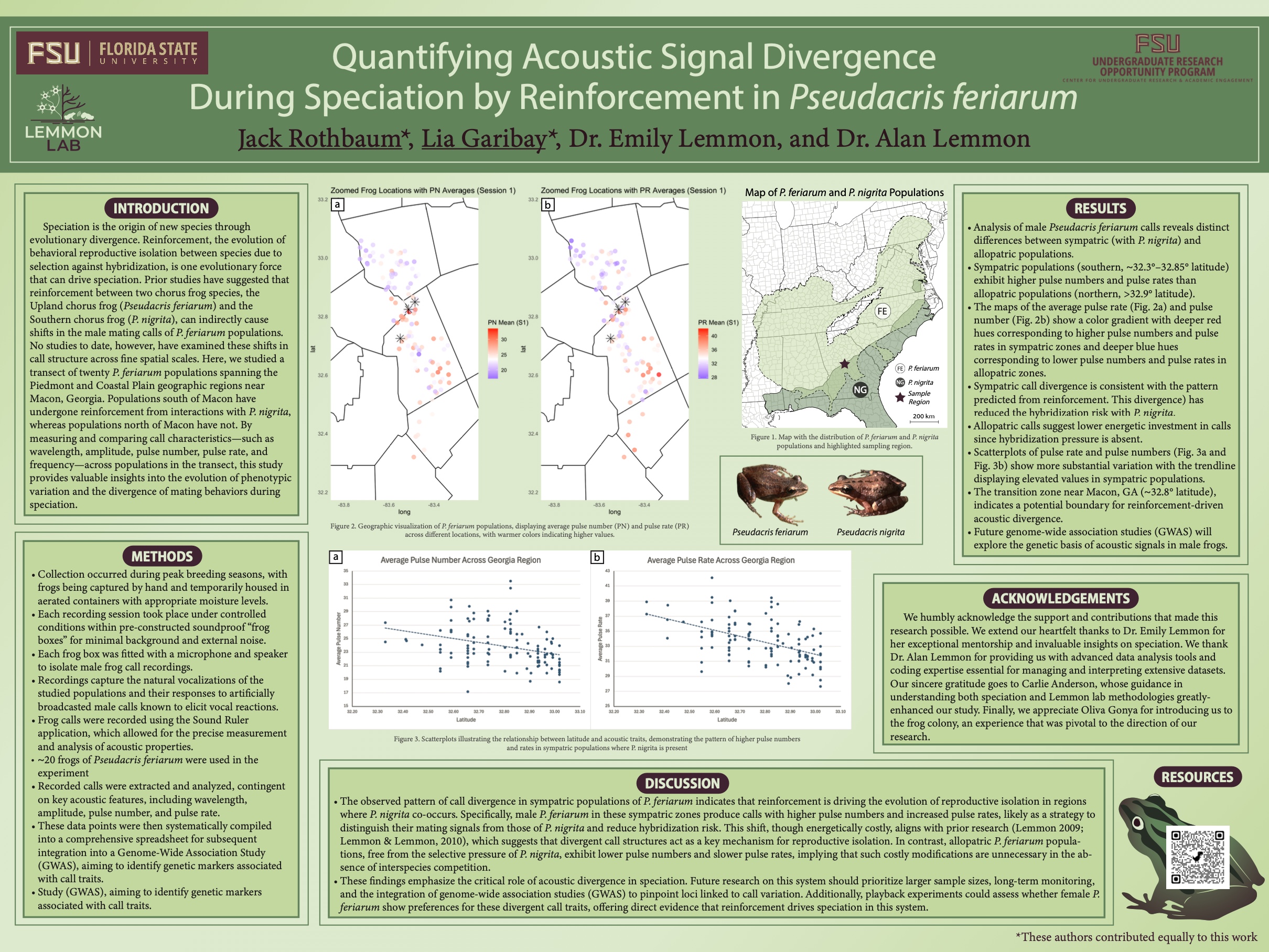Research Symposium
25th annual Undergraduate Research Symposium, April 1, 2025
Jack Rothbaum Poster Session 3: 1:45 pm - 2:45 pm/ Poster #154

BIO
Growing up in Delray Beach, FL, I have always been fascinated by the complexities of the natural world. My academic interests are deeply rooted in biochemistry and biology, particularly focusing on evolutionary biology and genetics. I am passionate about exploring the underlying wonders that shape life and am curious about the intricate biochemical processes that characterize biological functions. Currently, my research pursuits focus on advancing our modern understanding of speciation by contributing to ongoing research efforts and refining existing knowledge of the forces that drive evolutionary divergence.
Quantifying Acoustic Signal Divergence During Speciation by Reinforcement in Pseudacris feriarum
Authors: Jack Rothbaum, Dr. Emily LemmonStudent Major: Biochemistry
Mentor: Dr. Emily Lemmon
Mentor's Department: Biological Science Mentor's College: College of Arts and Sciences Co-Presenters: Lia Garibay
Abstract
Speciation is the origin of new species through evolutionary divergence. Reinforcement, the evolution of behavioral reproductive isolation between species due to selection against hybridization, is one evolutionary force that can drive speciation. Prior studies have suggested that reinforcement between two chorus frog species, the Upland chorus frog (Pseudacris feriarum) and the Southern chorus frog (P. nigrita), can indirectly cause shifts in the male mating calls of P. feriarum populations. No studies to date, however, have examined these shifts in call structure across fine spatial scales. Here, we studied a transect of twenty P. feriarum populations spanning the Piedmont and Coastal Plain geographic regions near Macon, Georgia. Populations south of Macon have undergone reinforcement from interactions with P. nigrita, whereas populations north of Macon have not. By measuring and comparing call characteristics—such as wavelength, amplitude, pulse number, pulse rate, and frequency—across populations in the transect, this study provides valuable insights into the evolution of phenotypic variation and the divergence of mating behaviors during speciation.
Keywords: Speciation, Biology, Evolution, Genetics, Frogs


